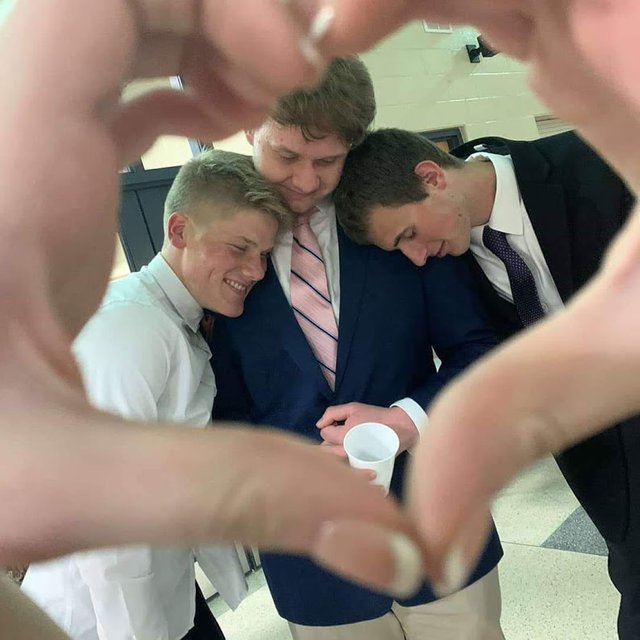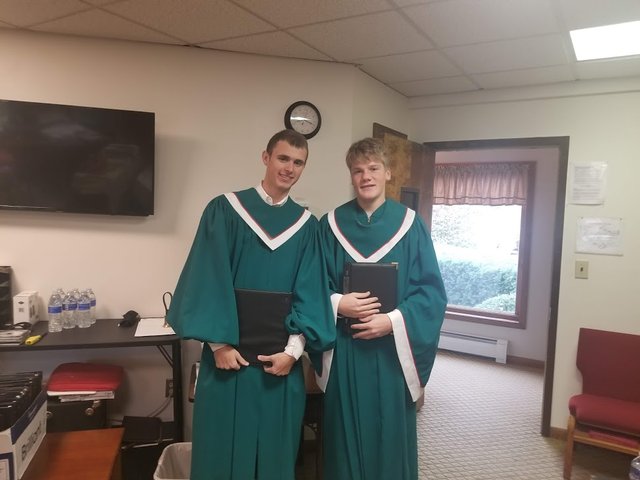New Original Composition for a Friend's Birthday: Nocturne no. 2 in E Major for Cello and Piano
Hello everyone! Today I have a new piece for you all. Over the holiday break, I composed this Nocturne for Cello and Piano, specifically with my friend Hinrich's birthday in mind. Hinrich is a cellist, so I wanted to write him a piece for his birthday. I will tell more about the back story later in the article, but first I think I should show you the piece that you are about to read about. Here is the piece:
Background of Piece
You may wonder how I came to decide to write a nocturne for Cello and Piano. It all started a few days before Christmas when my amazing girlfriend gave me a score for Chopin's opus 9 no. 2 Nocturne in E-flat for Cello and Piano. A few days later, Hinrich and I tried to read through it at a party. When we played through, I realized how beautiful the Cello can sound playing a Nocturne; the next day, I began to compose this piece.
What's Going On?
Form
My first Nocturne for piano was styled after a Chopin Nocturne, as-is this second one for cello and piano. This one is loosely in Binary form. It contains an A section which repeats with variations. This A section is followed by a B section in e minor. There is a transition, and then the A section appears again (with variations eventually). This is followed by the B section in E major. After this B section, there is a coda. Here is a depiction of the form:
A
A1
B
A2
B1
Coda
A Section
For the A section's theme, I drew influence from the Chopin op. 9 no. 2 Nocturne.
You will observe that the left hand accompaniment figure is very similar to Chopin's, and that the melody and bass have a contrupuntal relationship similar to the relationship between the melody and bass in Chopin's nocturne.
B Section
For the B section's theme, I drew influence from Franz Strauss' nocturne for Horn and Piano. I have always had a deep love for this piece. It truly is incredible how beautiful it is. I tried to make the B section louder and more passionate, as Strauss does at times in his Horn nocturne.
Voice Leading
The first step I took in writing this piece was to actually think of the harmony and write it out as block chords. In doing this, I forced myself to consider the motion of each individual voice. Here is an example of the harmonic progression for the A theme in block chords. Note that I colored each of the individual voices differently so you can follow each of their lines:
This was a concept that I could not grasp at first. I did not understand that even chords were built of individual voices which each had their own motion. I was forced to learn this concept after I showed several compositions with bad voice leading to Mr. Barone. After the 3rd or 4th, he finally cracked and went upstairs and discussed with Mr. Desiderio the necessity of me learning proper voice leading. That night, Mr. Desiderio gave me an assignment for the week to copy the left hand of Chopin's opus 27 no. 2 Nocturne in D-flat into block chords. The next week, my assignment was to draw arrows in each voice showing the motion from chord to chord. After this assignment, it clicked for me that each voice in the chord moves methodically. I then used this concept to write my first Nocturne, and now the second as well.
After I wrote the block chords out (as well as the melody at the same time), I turned them into an accompaniment figure. Here they are as an accompaniment figure:
Harmony
Dominant Substitute
For any of you who observantly noticed that D.S. is written in some parts of my analysis, this stands for "Dominant Substitute." Throughout the piece, I played with idea of having the fifth of the dominant chromatically descend to an eventual resolution on its respective scale degree 1 (obviously in a secondary dominant, it is not truly scale degree 1) if I had time to do so.
I did this because this idea has always fascinated me of a dominant with a diminished 5th that tends to resolve down by half-step. This is not a conventional idea, but it is also certainly nowhere near the level of innovation achieved by modern harmony. It is me playing with an idea that would have been new and exciting 200 years ago. So, you will notice what I called "Dominant Substitutes" periodically throughout the piece.
Mistake in My Analysis
I figured I would bring a mistake to your attention. In my analysis, I wrongly labeled an Italian 6th a French 6th. I wrote that analysis out rather quickly and accidentally labeled the chord wrong. You will observe the exact same chord earlier on in the melody, properly labeled as an Italian 6th. I am sad that I made such a simple mistake. This goes to show you that it is important to take your time in analysis. Or that it is important to label what you are doing as you write it so a few weeks later you don't think you did something else.
Contrast in Sections
One thing which you might notice is that the harmony in the A section is much more complex than the B section harmony. For the B section, I focused on building a thick sound, and therefore stuck to one harmony or two harmonies per measure. Because of this, the pianist can hold the pedal down and allow a thick sound to be produced.
Transitions
I am moderately proud of the transitions in this piece. Within the first transition, I tried to play a trick on the ear.
Within the piano part, I produced a melodic line with a downward trajectory. It first lands on the fifth scale degree, then chromatically descends to the seventh of the dominant seventh. In the following measure, I continued the chromatic descent with an A flat resolving down to g natural. My intent was for the listener's ear to interpret the A flat as a G sharp (resolving the seventh) because the listener thinks we are in E major. The g natural reveals the surprise that we are truly in e minor. This is an example of trying to manipulate the tendencies of pitches.
The second transition is from e minor back to E major. I am quite fond of the deflation that occurs in terms of dynamics, and I am satisfied with the harmonic progression which I wrote. It is a little odd, but I think it works and has a nice effect.
Initiative
For those of you who don't know, the Philadelphia Orchestra is performing all 9 Beethoven symphonies. Hinrich has tickets to every concert except the concert for the 9th. I have set an account up for Hinrich (@haihin1). Please feel free to follow it and look out for posts. I was hopeful that he might be able to raise the money to buy a ticket (around 120 dollars) from Steem. If you have time, make sure to keep an eye on his account, and if you have voting power, please vote for his articles. I am going to designate 50 percent of this article's rewards to his account as well.
Conclusion
Thanks for reading/listening to this! I hope you enjoyed the piece! If you have any feedback, please remember that feedback is always appreciated. I hope you have a wonderful week!
(Note) In order to encourage meaningful feedback on the platform, I will check comment trails of users who leave superficial comments (ie "Awesome post," or "Upvoted.") and will mute any users who exhibit a pattern of leaving "spammy" comments.




Resteemed, your post will appear in the next curation with a SBD share for you!
Your post has been supported and upvoted from the Classical Music community on Steemit as it appears to be of interest to our community. We also support jazz and folk music posts!
If you enjoy our support of the #classical-music community, please consider a small upvote to help grow the support account!
You can find details about us below.
The classical music community at #classical-music and Discord. Follow our community accounts @classical-music and @classical-radio or follow our curation trail (classical-radio) at SteemAuto!
Delegation links: 10SP, 25SP, 50SP, 75SP, 100SP, 150SP, 200SP, 250SP, 500SP, 1000SP
@untersatz curate 2
The @untersatz witness and manual curation is under the guidance of @contrabourdon and @organduo.
Lucky friend! What a treat!!
This post was shared in the Curation Collective Discord community for curators, and upvoted and resteemed by the @c-squared community account after manual review.
@c-squared runs a community witness. Please consider using one of your witness votes on us here
Congratulations @cmp2020! You have completed the following achievement on the Steem blockchain and have been rewarded with new badge(s) :
You can view your badges on your Steem Board and compare to others on the Steem Ranking
If you no longer want to receive notifications, reply to this comment with the word
STOPVote for @Steemitboard as a witness to get one more award and increased upvotes!